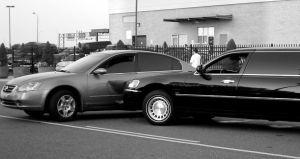There is no doubt that anyone living in a major U.S. city will complain to some degree about the intensity of rush hour traffic. Los Angeles is amongst one of those cities. But further on down that list is Atlanta, a rapidly growing city with quite a few traffic conundrums. If you own a car in the city, and actually get behind the wheel to drive it—then you more than likely have been privy to some rather creative maneuvers (by others) on the road. While most cities have their fair share of bad drivers, Atlanta seems to be particularly known for its sticky traffic situations. “ATL” natives are more than familiar with the manner in which people on their roads seem to operate. But those who have decided to make Atlanta home might want to take note of some helpful hints for getting around the city safely. First and foremost, it’s important to recognize many of the popular driving faux pas. In doing so, you can figure out what kind of counter moves to make in order to avoid imminent peril.
1- The other driver more than likely will not use his/ her signal.
One of the things that annoys me the most about Atlanta traffic is the complete and utter disrespect of signal usage. First and foremost, let the record state that NOT using proper signals during turns and lane changes can get you a nice juicy traffic ticket. Aside from that, it’s just plain rude, not to mention dangerous. So what do you do to combat this poor driving habit? Anticipate! Use your powers of observation to discern what the driver ahead of you is about to do. Have you noticed that he/she is busy putting on make-up or chatting on a cell phone? Is he/she moving at a fairly high rate of speed? Studies have shown that laziness or preoccupation is the main reason that people fail to use their signals. Try to watch for particular patterns in his/her driving. The chance that the turn signal will not be used is pretty significant. Give the driver enough time to see you in the rear view mirror, and do not tailgate. With enough space between you and other cars, you’re sure to react much better should the other driver make a sudden move without using the turn signals.
2- Four Way Stops? What’s that…?
Picture it: There’s been a horrible storm and the lights at a major intersection are completely out. Traffic is building up from each of the four directions. Your trusty Driver’s Education manual advises that drivers should yield to the driver to the right. The problem is, that in Atlanta (and I suspect, many other cities) people are either ignorant to this law, or simply don’t care. If that’s the case, then it really doesn’t matter whether you abide by the rules. If the other driver decides to make a mad dash out of turn, your vehicle (with you in it) is “creamed corn.” So, if you’re ever at a four-way stop, by all means follow the Yield-to-the-Right rule. But make sure that you observe very carefully all the other drivers at the intersection. There will always be that one driver who attempts to make a mad dash, and breaks up the natural flow of traffic. You’ll want to watch out for this person. This is the time where safety rules out over all else. The trick here is to watch out for confused drivers who don’t realize whose turn it is. If you can, try and make eye contact with the other driver(s). Sometimes they will, in an effort to prevent a collision allow you to proceed first.
3- Drivers do not acknowledge their blind spots on the highway.
‘Tis true that some drivers are completely ignorant of their blind spot. The blind spot is defined as the space outside of your vehicle which is not readily visible in side, rear-view mirrors. Traditionally, drivers in lanes adjacent to you fall into this area. It is an incredibly dangerous practice to drive in one’s blind spot, as most people rely only on their side-view mirrors, and do not fully turn their heads when changing lanes. One way to avoid collisions of this nature is to move one lane away from other drivers on interstate highways. This gives you a bit more range in your peripheral vision. If that is not possible, try either reducing or increasing your speed so that you are several car lengths away from the other driver. Giving other drivers enough space on the road is half the battle in preventing car collisions.
4- Someone will run the red light.
Practically everyone has seen the startling Volkswagen advertisements in which two ore more parties end up in a car crash due to someone’s negligence. It is one’s first instinct to bolt as soon as a stop light turns from scarlet to green. But here is a piece of advice worth taking: Wait. The chance of someone running a red light in Atlanta is fairly high. This is why the city has positioned several cameras at busy intersections where speeders and violators tend to run the light. There is no need to remain stationary until the cars behind you begin honking. But a few glances to both the right and left at intersections can save a life or three. The best practice to have when the light turns green is to wait a few seconds before dashing off. Chances are, a person attempting to “make the light” will not breeze through the intersection if the light has been red for several seconds. Had the participants in the Volkswagen commercial had followed this advice, the ad would have been a moot point.
5- Road Rage is rampant in Atlanta.
There have been several cases where innocent drivers have been brutally attacked while on the road. On December 21st , an eighty-year old woman was shot in the legs as she drove her car down a metro Atlanta road. Believed to be the victim of road rage, the shooter has still not been apprehended. In another case a small boy was shot as his father became the target of another driver’s road rage. These instances, while extreme, are happening with more frequency throughout the country. While it’s not feasible to predict all toxic situations on the road, there are a few things you can do to deal with someone who has road rage (provided that the Road “Rager” is not you). Try smiling, first of all. If you find yourself in a situation where another driver is showing you his/her unpopular finger, retaliate not with a finger of your own, but a great big smile. The old adage remains true about catching more flies with honey rather than vinegar. An angry driver is more than likely looking for confrontation. By responding with a completely opposite reaction, you can avoid playing dangerous driving games on the road. If the driver continues to offend or follow you, then you can cite the behavior as harassment, and/or report the driver for reckless driving. If possible, get the license plate number of the individual and call your local police precinct. Do not call 911 unless he/she is brandishing a weapon or is otherwise jeopardizing the lives of the public.
It’s impossible to detect what kinds of mayhem will greet you when you get into your vehicle. Impatience and negligence are two of the biggest factors in motor vehicles collisions. Driver’s Education classes teach students the fundamentals of driving. Students are taught how to operate a vehicle, and how to abide by the laws of that state. But Driver’s Education does not fully prepare pupils for all the psychological perils of driving. The best thing to do on the road is WATCH other drivers, and do your best to anticipate their moves beforehand. By doing so, you can prevent a multitude of mishaps which could possibly take your life, or someone else’s.



